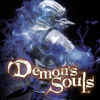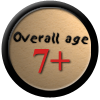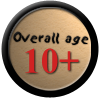|
Holiday Games of 2009 Round-up: Listed to the right are the major game titles for holiday 2009. "Holiday games reviewed" are just that; if you click on a respective link, each will take you to that game's full review. "Holiday game sum-ups" give an outline of each title's gameplay, an approximate idea on its content, from in-depth research and/or demo playthroughs...by me, and what age I recommend it for. These 26 games are what I can't get to before the end of the year and none of the content sum-ups or recommended ratings are final; I can't include every detail until I play each of the games in their entirety. But hopefully this should hold you readers over until I can....To begin reading, you can click on a title, or simply scroll down—the games are listed by release date. (To get regular updates on what I am reviewing next, follow me on Twitter) |
Holiday games reviewed: Holiday game sum-ups:
|
Gameplay sum up:
Dissidia: Final Fantasy is a pseudo-RPG, one-on-one fighter, which revolves around an eternal struggle of wills between Cosmos, goddess of harmony, and Chaos, the god of discord, as they summon rival warriors from each of their respective worlds to decide the fate of all. These warriors happen to be 24 of the most iconic characters from all twelve games in the Final Fantasy saga, including well known protagonists like Cloud, Titus and Squall, and antagonists like Sephiroth; all of whom have varying styles and powers. You'll then use a character of your choice to complete the 40+ hour story, as you face off against your rivals in one-on-one matches set in wide-open stages, while stealing their "Bravery" to add to your strength, and follow up with your HP attack to do damage, as you fill your EX Gauge to perform supermoves and traverse the stages with prompted button presses, which will allow you to wall run, make flying leaps and even grind on rails. The characters' skills are fully customizable and upgradable with earned EXP and gil from completed battles, and beyond the story, you can compete in Arcade against the AI or other players in local Ad-Hoc multi-player.
Content sum up:
The ESRB rated the game "T" for Teen, citing "Fantasy Violence," "Mild Language" and "Partial Nudity." Fantasy Violence refers to the fact that you'll be combating a number of rival Final Fantasy characters in one-on-one matches with weapons like axes, rods, staffs, swords, daggers, boomerangs and a variety of flashy magic attacks depending on who you choose to play, along with summons that will have your character call up mythical beasts (with those like Shiva and Ifrit from previous games in the series) to attack your rivals with magic and/or melee weapons. When attacked, rival characters will groan and then yell out as they fall to the floor in slow-mo during your final blow, and as you fight, both you and your opponents can break through certain objects, but devoid a plethora of light show particle effects coming from weapon trails and magic attacks, combat is bloodless. Partial Nudity refers to female fighters Ultimecia, who's dress reveals the inner sides of her breasts, and Cloud of Darkness, with a bikini-like outfit that looks as if it's painted on. And Mild Language refers to a few attack names that contain "hell," along with scant uses of d*mn and bastard.
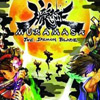
|
#2 Muramasa: The Demon Blade Available for: Wii |
Gameplay sum up:
Muramasa: The Demon Blade is a 2D, highly stylized, hand-drawn side-scroller based on Japanese lore, in which you progress as Kisuke, a young man running from the law after losing his memory, or Momohime, a young princess possessed by the evil spirit, Jinkuro, and forced to do his bidding. Both of these characters have their own levels, boss battles and story, but both will be performing the same task throughout, as they traverse the side-scrolling paths (30 stages in all) while fighting human and mythical demons with their swords and using the pseudo-RPG elements to upgrade their skills, swords and collect items. Upon reaching the end of each stage, they will fight a boss, collect its key and then unlock a barrier to proceed to the next area. The swords, 108 collectable total, are separated into two types; the larger, more damaging Long Blade and the quicker but weaker Blade; both the types have a Secret Art special move, but if this move or the block is used too much, it will deplete the Soul Gauge, forcing you to wait for the swords' recovery. There are also three options of control for the game, including the Wiimote, Gamecube controller and Classic Controller.
Content sum up:
The ESRB rated this game "T" for Teen, citing "Alcohol Reference," "Fantasy Violence" and "Suggestive Themes." The Fantasy Violence refers to the fact that you'll be taking down a variety of rival human and mythical demon enemies with your swords, which will cause them to puff into black/pink clouds of smoke—there is no blood. Suggestive Themes refer to light talk of prostitution, just talk, one large chested (which bounces around as she moves) female character is in a cleavage-revealing outfit, and in some areas of the game, you can take up a "Bath Monkey's" offer for them to lead you to a hot spring in which, if you're playing as the female character, you will see her loosely hold a towel over the front of her body, with the sides of her legs and upper thighs in full view (if you're the male, he wears a small loin cloth). Alcohol Reference consists of the two playable characters using a number of alcoholic potions (sake, liquor, etc.) to restore health, and there's dialog about getting drunk or having a hangover. Lastly, there is mild language, with a few uses of hell—most in context.
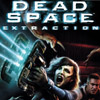
|
#3 Dead Space: Extraction Available for: Wii |
Gameplay sum up:
Dead Space: Extraction is a prequel to last year's Dead Space, and is set on the same space station leading up to the latter's events, while following the plight of a group of human survivors that have to try to fight through the dreaded droves of Necromorphs (infected, reanimated bodies of the human dead) to ultimately (and hopefully) escape the station alive. Different from the first, this installment is a "rail-shooter," meaning other than aiming and shooting at what the game is pointing you toward, it does all of the directional movement, camera and level navigation automatically. This leaves you with the focus of aiming and shooting in a prompt and accurate manner, and much of the last game's fully upgradable weapons make a return, including the dismembering Plasma Cutter, Flamethrower and Stasis Module (freezes enemies temporarily), along with a return of "Zero Gravity" sequences and new weapons like the electrocuting Arc Welder. Unlike most rail-shooters, this includes elements like puzzles and side-paths, and there is a co-op multi-player, meaning a second player can drop in and shoot with a secondary, on-screen aim-reticle, and then drop out at any time.
Content sum up:
The ESRB rated this game "M" for Mature, citing "Blood and Gore," "Intense Violence" and "Strong Language." The Intense Violence refers to the fact that you will be using weapons like the Plasma Cutter to dismember, the Flamethrower to burn and the Arc Welder to electrocute the grotesquely mutated bodies of the human dead (one of the main enemies, Stalkers, are heavily grotesque in appearance, with their flesh rotting off, revealing the skeleton underneath, and elongated, tree-like limbs, which taper off into the rough hooks they totter on), along with the fact that your fellow survivors are seen dying horrible deaths at the hands (or hooks) of these creatures throughout. The Blood and Gore refers to the effects your weapons produce, while you dismember the enemy from their deformed neck, arms and legs, as said limbs fly off with a *squish* and blood spurts heavily from their stumps, splattering in an equal amount onto walls and floors—blood and bodies do linger, and there is bloody, dismembered enemy and human bodies scattered throughout. And Strong Language refers to a frequent use of words like d*mn, hell, sh*t and the f-word by ally characters.
Gameplay sum up:
Ninja Gaiden Sigma 2 is a repackaged PS3 edition of Xbox 360's Ninja Gaiden II, with three new playable female characters, Rachel, Ayane and Momiji (each of which have one of their own levels); weapons; five new bosses; a Chapter Challenge to test your skills and post your results on online leaderboards; Team Challenge, in which you and an online friend progress in 30 co-op levels, along with a higher resolution (720p; the last was 585p sub-HD), improved graphics and misc. gameplay fixes.
Content sum up:
The ESRB rated this game "M" for Mature, citing "Blood and Gore," 'Partial Nudity," "Suggestive Themes" and "Violence." Compared to Ninja Gaiden II, this lacks much of that game's blood effects; when you attack enemies, blood spurts from their bodies in light amounts and then splatters on the surrounding area in equally as light amounts. And while you still can dismember enemies from the neck, arms and legs, instead of blood spurting from the stumps, clouds of (completely unblood-like) purple mist eject instead—blood, bodies and their limbs also disappear within seconds after falling, and cutscenes contain absolutely no blood or gore. However, this does add three playable female characters, all of whom show heavy amounts of cleavage that bounces around in excess as they move, and "thanks" to another new addition, you can rapidly shake the Sixaxis controller at anytime to have their breasts jiggle in an exaggerant manner in both gameplay and cutscenes. Otherwise, this is the exact same game in regards to content, scene of partial nudity, bizarre enemies, story, violence and all, meaning you can read my review of Ninja Gaiden II here for more complete info.
Gameplay sum up:
Demon's Souls takes place in a medieval world in which a thick, demon-filled fog has covered the outskirts of its land; many have braved this fog to destroy its source, but none have returned. Now it's your turn to direct your fully customizable character (in both appearance and stats; from a wizard to warrior, or anything in between) through the haunted, lonely levels as you combat human, demon and mythical enemies with a vast array of defensive magic and medieval weapons, which will earn you Soul Points that can then be used in its main hub to upgrade your stats and equipment. The game is touted as being unforgiving and almost brutal in difficulty, with no ability to pause or manually save your progress; vendors will never come back if killed; you can't sell your old equipment; if (and when) you die (you will die), you lose all progress, unless you can travel back to the spot of your death in a weaker Soul form and fight the now tougher enemies to get it all back; and while the less you die, the more the game will reward you, the more you die, the harder things become.
This difficulty is even furthered by its unique use of online play, and if you are logged into the Playstation Network while playing, you will often see a ghost form of another player as they progress in the same area. And while you cannot interact with them in this instance, these fellow players can leave messages at any point in a level to warn other players of specific dangers and you can examine bloodstains representing other player's deaths, as to watch replays and see what not to do. You can also invite up to two currently dead Soul form players to enter your game's world and help you defeat enemies, which upon completion, will reward them of their lives, and then send them back to their own world. And in a more menacing move, a currently dead, online Soul form player can take a quicker, easier route by invading your game and trying to kill you, which will reward them their life if they succeed, but if you come out the victor, you will gain a portion of their Soul Points for your troubles.
Content sum up:
The ESRB rated this game "M" for Mature, citing "Blood," and "Violence." The Violence refers to the fact that you will be fighting a plethora of enemy human, demon, goblin, undead skeleton, dog, and oversized rat and insect enemies with weapons like poles, swords, axes, hammers, bow and arrow, crossbows, and spears, along with a variety of magic spells, from fire to healing—enemies will grunt and/or scream when hit, and then slowly sink to the ground. The Blood refers to the effect the arsenal produces, as both your character and enemies spurt blood in moderate clouds when hit, which then slowly spills onto the floor into a puddle. Blood and bodies do linger, but the first only lingers in dried spots to show how other online players died, so that you can perhaps avoid their mistakes, and blood effects can be disabled under "System" in the options menu. This also includes "Character Tendency," which is akin to a moral system; this means if you decide to kill non-enemy characters (like vendors in the main hub; who will never come back) you will become darker, and if you refrain, visa-versa, opening exclusive paths and items depending on your actions.
Lastly, with the aforementioned online element—in which you can be abruptly attacked at any time in your own game by fellow online players seeking to gain their life back, by taking yours—its haunting, lonely, hostile atmosphere, a constant threat of near to instant death and its brutal, unforgiving difficulty, the gameplay can be a consistently suspenseful and tense experience, to say the least.
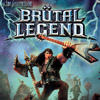
|
#6 Brutal Legend Available for: Xbox 360 - PS3 |
Gameplay sum up:
Brütal Legend—from the mind that brought you Psychonauts, Tim Shaffer—is the tale of a roady by the name of Eddy Riggs (voiced by Jack Black), who is transported to a fantastical, bizarre heavy metal world in which a band of human rebels fight for their freedom from the evil Doviculus and his demon hordes. After he's introduced to a few allies, Eddy joins the fight, as he uses his hot rod called, "The Druid Plow," to explore the 40 square miles of its open world, while engaging in story missions or completing side-quests (like racing said hot rod, etc.) in non-linear order. As he progresses in the game, Eddy will use his battle axe "The Separator" and electric guitar "Clementine" to fight the enemy, the second of which can summon fire or lightning from the sky, and even cause mini-earthquakes; both are fully upgradable. Beyond pure action, many of its story missions consist of using Eddy to command his troops in a real-time strategy fashion, which also extends to the game's multi-player mode.
Content sum up:
The ESRB rated the game "M" for Mature, citing "Blood and Gore," "Intense Violence," "Partial Nudity," "Strong Language" and "Suggestive Themes." Intense Violence refers to the fact that Eddy will be using his battle axe, electric guitar and hot rod to swipe, set aflame, electrocute and run over human and demon enemies. And Eddy can have his men headbang enemies to death, as well as use machine-guns, missile launchers and even back-strapped subwoofers. Blood and Gore refers to the effects this arsenal produces, and when Eddy attacks enemies with his axe, they will spurt blood in heavy amounts as it splatters about the area, and it can dismember from the neck and arms, causing the limbs to fly as stumps squirt heavy blood—often as it zooms in and slows down during his finishing moves. Eddy also gains a later ability to melt enemy faces off with guitar solos, which you then see close-up, as they fall off into a puddle, and a certain weapon causes enemies' bloody chunks to rain from the sky—though both the blood and bodies do disappear. Strong Language refers to the fact that all characters frequently spout most profanity available, including the f-word...
However, you are prompted right from the beginning if you wish to have blood, gore and language enabled, meaning all blood and dismemberment can be removed, along with language, which although isn't removed, is fully bleeped out—both options can be toggled at any time in options under "Gore" and "Profanity." The Partial Nudity refers to the female, amazon-like enemies, Zaulia, who's scant garb reveal a partial view of their breasts and behind. And the Suggestive Themes refers to the fact certain female enemies resemble "Dominatrix" complete with whips; some characters are dressed in outfits similar to bondage gear or "S&M" wear; there are brief mentions of stereotyp- ical roady/rock star activities such as "orgies" but are never seen; Eddy and the main female protagonist, Ophelia, flirt (Eddy: You'll never french kiss again! [said to a slain monster] Ophelia: What's french kissing? [he says he'll show her later]) and kiss in a mild manner throughout; and Battle Nuns are a far removed and slutty version of the the originals, with impossibly tall, slender frames and garb showing decent cleavage; otherwise, they're of a monstrous and unappealing appearance.
Lastly, Eddy and ally characters are seen smoking cigarettes throughout; and there is light reference to beer, with some characters seen holding bottles of the substance but never drinking it. The heavy metal world is presented in a fantastical, hellish fashion, with all of the common bizarre and pseudo-occult imagery associated with this genre of music, including pentagrams, crosses, piled bones, skeletons, volcanos, etc. But all is taken in a light, almost satirical tone, with heavy use of tongue-in-cheek humor to convey the above elements. And since this is a heavy metal game, you must have the music to go along with it, meaning it features dozens of songs available for listening from bands like Judas Priest, Black Sabbath and Ozzy Osbourne.
Gameplay sum up:
A Boy and His Blob is a re-imagined remake of the original 1989 NES title, A Boy and His Blob: Trouble in Blobolonia, and is about the Blob fleeing the planet of Blobolonia to find help in the form of the Boy, as they then try to take down his planet's current ruler, the Evil Emperor. The gameplay revolves around navigating the hand-drawn 2D levels (80 stages total; 40 levels, another 40 "challenge" levels unlocked by collecting treasure chests) by using the specific jelly bean types afforded to you in each level to feed to the Blob, thus turning him into helpful puzzle and platform objects, along with things like anvils to defeat the enemy black Blobs barricading your way. Unlike many Wii games, this lacks motion controls, and you will instead simply use button presses with a combo of the Wiimote+Nunchuck or the Classic Controller.
Content-wise: 6-
The ESRB rated this game "E" for Everyone, citing "Mild Cartoon Violence." This refers to the fact that the Boy can use the transformed Blob to defeat the enemy black Blobs by turning into a pit for them to fall into, being an anvil to drop on them, or at certain points use a robot suit to punch and jump on enemy Blobs; the majority of which, will result in enemy Blobs popping with a *squish* and a *splat.* The Boy can be stunned by running into bad Blobs, but this only results in him briefly and temporarily fainting from his fright—the Boy can't be killed—and some of the enemy Blob bosses will take on somewhat menacing forms of animals like snakes, etc.
Difficulty-wise: 7+
The puzzles—what this game mostly consists of—can get tricky further down the line, with solvents that can even become obscure to adults. Add this with the fact that you have to create your own solutions with the jelly beans presented and the controls are said to be somewhat overly complex, and the game is most suited to (advanced) kids 7+. Although kids -7 could probably play early levels with a little help.
Fun for: Kids & Adults
With its "retro" nature, charming hand-drawn graphics and simple but still challenging gameplay, both kids and adults will find equal interest in playing this game.
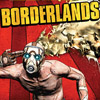
|
#8 Borderlands Available for: Xbox 360 - PS3 - PC |
Gameplay sum up:
Borderlands is an open-world—real-time—RPG shooter, with a focus on loot collecting and its prominent online elements. The game revolves around the fabled Vault, which is said to contain priceless treasure on the wasteland planet of Pandora. And after you pick from the game's four unique playable characters, the Soldier (all around fighter), Hunter (long-range fighter), Siren (stealth/magic) or Beserker (brawler), you will set out for this Vault while fighting those also trying to find its location. As you progress, you will collect items and weapons (17 million variations of weapons alone) randomly generated by its Procedural Content Creation System to combat enemies and take up missions to procure better weapons and earn experience points that can then be used to upgrade your stats; vehicles are made available later in to traverse its open-world, along with transit points for quicker travel. However, its main focus is its online multi- player, with a 4 player online co-op (2 players split-screen) where players participate in another's game to help said player complete their missions; this will reward them with exp. that they can use in their respective game worlds.
Content sum up:
The ESRB rated this game "M" for Mature, citing "Blood and Gore," "Intense Violence," "Mature Humor," and "Strong Language." The Intense Violence refers to the fact that you will be shooting down the human, creature (oversized bugs/wild dogs), Guardian (aliens) and Construct (automatic turret) enemies with weapons like (17 million total variations) Alien guns, Combat Rifles, Pistols, Revolvers, Rocket Launchers, Shotguns, Sniper Rifles, Submachine Guns, grenades and alternate ammo types, including those that set enemies on fire, burn them with acid or electrocute them on contact, as they then grunt, scream and fall dead. The Blood and Gore refers to the effect this arsenal produces, as enemies will spurt blood in moderate amounts, lose arms, legs and their head—and with certain weapons—are severed in half, which all result in their stumps briefly squirting blood in a fountain fashion. Bug enemies spurt green blood when hit, but both blood and bodies disappear to keep up the vast world's smooth performance, and in comparison to similar games like Fallout 3, blood is present but less prominent than most, especially with its cel-shaded, almost cartoony style.
The Strong Language refers to the game's characters frequently using every profanity available, including sh*t, p*ssy, d*ck and the f-word (with several crude slang terms added in) and, as always, online co-op/versus players can and most often will use the f-word profusely. And Mature (a.k.a juvenile) Humor refers to the fact that the enemy and characters will joke about other characters' private parts, along with subjects like nudity, rape and crude (often too detailed) insults involving their "mothers," many of which, are most often in the form of taunts while fighting. Lastly, the playable female "Siren" character is garbed in a skin-tight, cleavage revealing outfit, with persona and powers that reflect a notably sensual nature—and its recently released downloadable content titled, "The Zombie Island of Dr. Ned," has you fight through droves of campy but dismemberable, explodable zombies that brings out a markedly more pronounced side to its blood effects than the main campaign's normal enemies.

|
#9 Ratchet & Clank: A Crack in Time Available for: PS3 |
Gameplay sum up:
Ratchet & Clank Future: A Crack in Time is the seventh installment in the long-running series. Wrapping up the Future storyline, this answers most of the questions spanning the entire saga, splitting its narrative down the middle, as Clank learns of his heritage as a guardian of time, and meanwhile, Ratchet tries to locate Clank while making his own discoveries about his past with the help of fellow Lombax, Alister Azimuth, along the way. This game makes a departure from the series' traditional elements, with the Clankless Ratchet made to navigate levels with his new "Hoverboots," to make up for the lack of Clank's platforming moves, along with an ability to speed around levels on rails and boost pads. Another addition has Ratchet flying his spaceship in open-world fashion, with options to visit side-planets and explore them Super Mario Galaxy-style, as to collect weapon and ship upgrades, and Ratchet's new "Constructo Weapons" can be customized in attachments/appearance. Lastly, Clank will use his Chronoscepter to traverse his surroundings by slowing time, as well as implement Time Pads to record up to four holograms of himself in order to solve time puzzles.
Content-wise: 7+
The ESRB rated this game "E10+" for Everyone 10+, citing "Animated Blood," "Comic Mischief" and "Fantasy Violence." The Fantasy Violence refers to the fact that Ratchet will be using a variety of over-the-top energy weapons to combat the robot and alien enemy and his wrench to hit them, along with Clank, who will use the Chronoscepter to slow time around enemies or just smack them with it, and there is plenty of hectic explosions during battles. Animated Blood refers to the fact that bug-like enemies will shed a negligible amount of green goo when hit or shot, otherwise, enemies will only implode in firework-like effects and bolts when finished. And Comic Mischief refers to the nature of Ratchet's weapons, like the Groovitron Glove that throws out disco balls, making nearby enemies dance like they are from the 70s, or the Sonic Disrupter, an actual animal that is held and then triggered to belch a damaging wave of sound...and repeatedly—not counting side-game, Size Matters, this is the most mild one yet, with no language and far less low-brow humor; it's suitable for all ages.
Difficulty-wise: 10+
While its difficulty is probably the most balanced in its series, like all Ratchet & Clank games, if you do not take the time to upgrade your weapons and armor, you can and will die very quickly. Even if you do focus on upgrades, the controls are complex, the Ratchet battles are overwhelming, and—while there is a hint system and an ability to skip the puzzles—Clank's time-based puzzles (a new addition to this series) are mind- bending (even for adults); difficulty is just more suited to kids 10+.
Fun for: Kids & Adults
With its clever, sarcastic humor; colorful, pixar-like graphics; the skill-driven Ratchet portions; the mind-bendingly fun Clank time puzzles; and an insane amount of replay value, and this game is just as fun for adults as it is for kids.
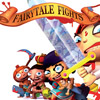
|
#10 Fairytale Fights Available for: Xbox 360- PS3 - PC |
Gameplay sum up:
Fairytale Fights is a twisted and morbid take on iconic fairy tale characters in beat'em up, hack n' slash form, as playable characters, including Little Red Riding Hood, Snow White, Jack (of "Jack and the Beanstalk") and the Naked Emperor (of Emperor's New Clothes) use 140 weapons to bludgeon, shoot and slash their enemies (which include those like lumberjacks and fluffy bunnies) while platforming through the linear, psue- do side-scrolling (fixed camera) levels (with 6 worlds in total) in order to regain their waning fame. To contrast the cutesy, cartoony style and setting, there is an excess of gooey blood and dismemberment to compliment its out-of-place combat, along with a 4 player online and offline drop-in/drop-out co-op and versus mode.
Content sum up:
The ESRB rated the game "M" for Mature, citing "Blood and Gore," "Crude Humor" and "Violence." Violence refers to the fact that you'll be fighting enemies like lumberjacks, gingerbread men, rabid fluffy bunnies and knights, along with bosses like a conjoined Hansel and Gretel, Pied Piper and Pinocchio, with weapons from a sharpened pencil to a crowbar, scissors, a wooden chainsaw and a plethora of random objects (there is 140 in all). The Blood and Gore refers to the effect weapons produce, as enemies can be dismembered from the neck, legs and arms or severed in half, all of which results in their blood spurting in extreme, bright and gooey amounts, and then splattering on your characters and pooling onto the ground, allowing players to slide through it, thus spreading it around even more. Dismemberment is even furthered by "Glory mode" in which time slows to a halt as you slice the enemy into pieces (a split-screen shows a close view of this action), and enemies can also be burned by fire, acid and frozen to death. The Crude Humor refers to playable character, the Naked Emperor, with hairy chest and full behind visible; only a fig leaf covers his crotch.
But while combat is ridiculous and grotesque, its overall violence, gore and Emperor's nakedness is lessened by the game's cartoony, unrealistic and almost claymation-like visual style, with deformed proportioned and miniaturized characters.
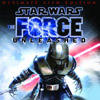
|
#11 Star Wars The Force Unleashed: USE Available for: Xbox 360 - PS3 - PC - Mac |
Gameplay sum up:
Star Wars The Force Unleashed: Ultimate Sith Edition is a repackaged release of the original, with all of the alternate character costumes (from Luke Skywalker to C3PO) and the two downloadable missions available up to this point. The only addition to this version is an extension of the Dark Side (alternate) storyline, and after you choose to kill Darth Vader, making you the Sith Lord's replacement, Palpatine then sends you to find R2-D2 for the Death Star plans on Tatooine as you fight through Jabba's palace, a Rancor, Boba Fett and Obi-Wan Kenobi. After this, you'll make your way to turn or kill Luke Skywalker on Hoth. The Hoth level is exclusive to this re-released version of the game, but the remaining two levels (the first being a Jedi Temple mission that's in no way related to the other two in regards to gameplay or story) and alternate character skins are available through download for the original.
Content sum up:
The ESRB rated this "T" for Teen, citing "Violence." The main draw to its new levels is to serve as Sith Lord Palpatine's assassin, as you then proceed to carry out this "evil" task on two of the most iconic characters in the saga. Otherwise, the content remains exactly the same as the previous version, which you can read about in more detail on my review for the original release, Star Wars: The Force Unleashed, here.
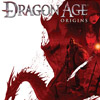
|
#12 Dragon Age: Origins Available for: Xbox 360 - PS3 - PC |
Gameplay sum up:
Dragon Age: Origins is a turn-based RPG developed by BioWare, and as such, is in the vein of some of their previous RPGs like Mass Effect, Jade Empire, Star Wars: Knights of the Old Republic and Baldur's Gate. The story revolves around a group of legendary warriors known as the Grey Wardens, whose job it is to ultimately fend off an Archde- mon's horde of Darkspawn in order to reunite the fragmented country. You will join in the fight as one of these Grey Wardens, but you must first decide on who you wish to be; a Human, Elf or Dwarf. And as the game's name states, each race has their own unique origins, changing the intro—its starting location—and overall reactions to your character throughout. Like previous BioWare games, you'll customize your character's stats, class and appearance, and then jump in, as you take quests, gather allies along the way, fight alongside your three-party team with the psuedo-real-time, turn-based combat system, and make moral choices with the branching dialog system, which will effect characters in your party for good or bad and set up the world events differently depending on what actions you decide to take.
Content sum up:
The ESRB rated this "M" for Mature, listing "Blood," "Intense Violence," "Language," "Partial Nudity" and "Sexual Content." Intense Violence refers to the fact that you will be fighting the demonic Darkspawn and rival humans with weapons including swords, axes, knives, maces, bow and arrows, and for magic users, a variety of magic. Blood refers to the effects the above weapons produce, as enemies spurt heavy amounts of it, as it then splatters and speckles all over your character and party—this will linger long after you have defeated them—and bloodied, dead bodies can be seen with blood pooled on the floor throughout. Sexual Content refers to an ability to visit brothels (as male or female) and then asking a hostess to "Surprise" you, which will result in you waking up next to people of the same/opposite gender, transsexuals or even animals, however, while sexual activity is implied, it's made unclear what actually goes on and nothing is ever seen. You may also develop romantic relationships with certain party members in either a same or opposite sex orientation...
And after wooing them, a cutscene will show as they kiss and embrace in their under- wear, but like the above, it will fade out before showing anything. At its extreme, you can attempt to have a foursome, but even the single-character relationships will take steady work and careful dialog choices throughout the lengthy game to garner any of these results—and besides, all of the above is entirely optional and not integral to the game's story. The Partial Nudity refers to a certain spirit, the Lady of the Forest, with only her long hair partially covering her breasts, and evil Desire Demons, who appear in female form with only small, pastie-like objects covering otherwise bare breasts; although beyond this, they look monstrous and inhuman. And Language refers to the fact that characters will use words like d*mn, hell, sh*t, a** and b*tch, but there are no uses of the f-word. There is Use of Alcohol with a certain party member who often slurs his speech and appears drunk often, taverns can be visited and a few missions involve the substance. Lastly, with the game's moral system, you'll have to make life and death decisions throughout and you can choose to be evil.
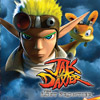
|
#13 Jak and Daxter: The Lost Frontier Available for: PSP - PS2 |
Gameplay sum up:
Jak and Daxter: The Lost Frontier takes place soon after the events of Jak X: Combat Racing, as Jak, Daxter and Keira embark on her spirit quest to become a Sage only to discover that a mysterious lack of Eco is causing their planet to deteriorate. On top of this, Jak finds both his Dark and Light Eco powers to be unusable, and to uncover the solution to both of these problems, the trio will have to, literally, travel to the ends of the earth. This installment retains many of the last games' elements, like platforming through linear levels as you fight enemies as Jak with his upgradable energy weapon, the Gunstaff, as well as collect Precursor Idols to unlock new powers, which will help Jak reach otherwise unreachable areas. However, the above takes a back seat to the inclusion of your Airship, which is fully customizable and is used to defeat Eco pirates during air missions, along with traveling between the game's world. Another addition is the Dark Daxter portions, as he (his form akin to Taz from Looney Toons, complete with a tornado spin) fights enemies with his Eco powers.
Content-wise: 10+
The ESRB rated this game "E10+" for Everyone 10+, citing "Comic Mischief," "Fantasy Violence," "Mild Language," and "Mild Suggestive Themes." Fantasy Violence refers to the fact that Jak will dispatch of Dark Eco and a variety of robot enemies with melee attack and his Gunstaff energy weapons, which will result in enemies falling back and dissipating into flashes of colored light. In Airship portions, Jak will shoot down many enemy pirate ships that disappear in the same effect as above, and Dark Daxter will dispatch of bug-like Dark Eco enemies that also disappear in light flashes. The Comic Mischief simply refers to Daxter making light talk of his behind and armpits. The Mild Suggestive Themes refer to dialog with some mildly suggestive remarks in regards to the game's female characters, but less so than previous games in the series. And Mild Language refer to d*mn being uttered a few times throughout.
Difficulty-wise: 10+
Like previous Jak and Daxter games, platforming portions (especially later ones) can be tricky, the controls are somewhat complex and the Airship sequences can get quite challenging. And devoid its difficulty, the content (while markedly more mild than Jak II and III (which I both gave 14+) is at the very edge of the game's E10+ rating, and closer to a "T" for Teen rating—it's simply more suited to kids 10+.
Fun for: Kids & Adults
Not counting the first game, the Jak and Daxter series has always leaned closer to an adult audience in regards to its difficulty and humor—kids and adults should enjoy this game equally, especially if they've followed previous installments.
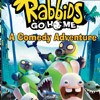
|
#14 Rabbids Go Home: A Comedy Adventure Available for: Wii |
Gameplay sum up:
Rabbids Go Home: A Comedy Adventure is a slapstick adventure starring the gapped- toothed, hilarious Raving Rabbids in their first full-on action/adventure game, as they try collecting and then using a vast amount of junk to reach the moon, nonsensically thinking the giant night light is their original home. You will go about this task as you control two Rabbids simultaneously, one that sits in the shopping cart to collect all of the junk and a second to steer it. You'll then proceed to humorously terrorize humans around you and avoid the enemies after you, like attack dogs, a variety of robots and latex hazmat-suited "Verminators" sent out to catch you, all the while you knock into random objects and even people, in order to procure them all for your shopping cart, and then drop the stuff off at "Collector Rabbid" checkpoints for safe keeping. As you progress, you will unlock items for your customizable Rabbid, which can then be used to change its (they reside in the "inner Wiimote" at the main menu; it looks as if your Rabbid is inside a Wiimote—you can bounce it about by using said controller) features and paint its bodies; it can then be used in the main game.
Content-wise: 10+
The ESRB rated this game "E10+" for Everyone 10+, citing "Cartoon Violence," "Crude Humor," "Mild Language," "Mild Suggestive Themes," and "Tobacco Reference." The Cartoon Violence refers to the fact that you will be using the Rabbid's shopping cart to chase and knock into retreating humans and animals or use water to spray at them in everyday settings (like airports and grocery stores), as they destroy the surrounding area, collecting the refuse for later use in their shopping cart. Crude Humor refers to the fact that there are light references of enemas and constipation in (human) dialog, the Rabbids will explore a brown liquid-filled sewer, flush objects down yellow liquid- filled toilets, and at one point, use a "bubble gurney" with a sickly man currently in it to fuel this balloon vehicle with his repeated flatulents...
The Mild Suggestive Themes refers to the fact that every time you use your Rabbid to scream at or fling jugs of water onto fleeing humans, it will, for no apparent reason, strip humans to their underwear, as they comment on this fact in a surprised manner, and Rabbids will occasionally be seen wearing lingerie thongs in cutscenes for the fun of it. The Mild Language refers to infrequent human use of, "p*ssed off. And Tobacco Reference points to a message over the airport intercom that warns employees not to smoke on their breaks due to aircraft risks. However, all the of above is presented in an extremely absurd and cartoonish fashion, making most of what sounds a bit on the edge of this rating, quite harmless and, overall, suitable for kids 10+.
Difficulty-wise: 10+
Gameplay does boil down to you simply steering around and collecting junk with your shopping cart, meaning those -10 could probably get through its levels with little help. However, with its aforementioned content, it is more suited to kids 10+.
Fun for: Kids & Adults
With the game's wickedly entertaining Rabbids and the whimsically ridiculous humor, gameplay and story, kids and adults should enjoy this game equally.
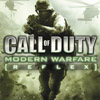
|
#15 Call of Duty Modern Warfare: Reflex Available for: Wii |
Gameplay sum up:
Call of Duty Modern Warfare: Reflex is a re-released Wii version of the Xbox 360 and PS3 Call of Duty 4: Modern Warfare 2007 original. This means devoid the downgraded visuals, the gameplay, including its campaign and online multi-player are identical. As always, the Wii version makes use of its motion controls and allows you to customize the sensitivity, along with other aspects, like the cursor's dead zone, etc.
Content sum up:
The ESRB rated this game "M" for Mature, citing "Blood and Gore," "Intense Violence" and "Strong Language." As mentioned above, this version's content is identical to the 360/PS3 versions, and since I've already written up a review for the original, you can refer to the original's review here for more complete info.

|
#16 New Super Mario Bros. Wii Available for: Wii |
Gameplay sum up:
New Super Mario Bros. Wii is a follow-up to the Nintendo DS title of the same name, and involves Mario and friends once again setting out to rescue Princess Peach from Bowser's clutches. It plays out exactly like past 2D Super Mario games, as you select levels from a map and then navigate its side-scrolling levels by platforming and using power-ups to reach the end. Other than a return of previous power-ups and an ability to ride Yoshi, new power-ups include the Propeller Suit to fly, the Ice Flower to freeze things, and the Penguin Suit to slide across the ground, water and improve traction on slippery surfaces. However, the biggest addition is the local 4 player co-op, where all four players participate to finish stages or compete within them by trying to touch the end flag first for bonus points, use "Free Mode" to track their stats, or "Coin Battle" to win by collecting the most coins. This also includes the "Super Guide," meaning if the player dies too often, a green block will appear; hit it, and Luigi will appear then take control, showing the correct way to navigate tricky areas. Control options include the Wiimote+Nunchuck or the Wiimote held sideways.
Content-wise: 6-
The ESRB rated this "E" for Everyone, citing "Comic Mischief." Like all previous Mario games, there's nothing here that any age can't see, with the most extreme example of violence including playable characters using power-ups to shoot fireballs, throw turtle shells and jump on classic enemies like mushroom Goomba's and turtle's heads with a *pop*, as they are then flung off the screen—that's it.
Difficulty-wise: 7+
Like all Super Mario games before it, later platform portions can become quite tricky, and yes, even for adults. But with the inclusion of the 2-4 player co-op, which allows more skilled players to help lesser ones complete levels—the less skilled players can even make themselves float in a bubble and wait until the other player finishes tricky areas—the aforementioned Super Guide (that has Luigi take control and play the level for you until you stop him—this even allows players to skip a level altogether) and its very simplistic controls (think original Super Mario Bros. on NES), and the game is as forgiving as possible for younger age groups. Kids 7+ should have little problem—and kids -7 won't have many issues if played with an older sibling or parent.
Fun for: Kids & Adults
With its new 4 player co-op, classic Mario gameplay and extensive replay value, New Super Mario Bros. Wii is most definitely fun for kids and adults alike.

|
#17 Resident Evil: The Darkside Chronicles Available for: Wii |
Gameplay sum up:
Resident Evil: The Darkside Chronicles is the retelling of Resident Evil 2 and Resident Evil Code Veronica, along with a new chapter set before the events of Resident Evil 4, in on-rails shooter form, meaning, other than you aiming, shooting and having partial control of camera viewpoint, it performs all of the directional movement, camera and level navigation automatically. This leaves you with a focus on aiming and shooting in a prompt and accurate manner, as you fight through droves of mutated creatures and once human, now infected zombie hordes, with a variety of weapons; from handguns, to shotguns and grenade launchers—which you can upgrade with collected gold coins. Additionally, the game tracks your performance and adjusts the difficulty accordingly; you can compare your skill with other players via the online leaderboards; a full story co-op is included, where a second player uses an additional aim-reticle to play; if you beat levels in a certain rank, you will unlock alternate character costumes; and after completing the story mode, you can participate in "The Tofu Survivor," where you try to survive against enemies made solely of Tofu blocks.
Content sum up:
The ESRB rated this game "M" for Mature, citing "Blood and Gore," "Intense Violence" and "Language." The Intense Violence refers to the fact that you'll be pursued by and combat a variety of grotesque monsters and mutated animals, including attack dogs; fish; giant tarantulas; alligators; frogs; and infected, undead—once Human—zombies with weapons like handguns, shotguns, submachine-guns, a rocket-launcher, magnum and Bowgun (which shoots arrow-like projectiles), along with grenades and your knife for close-quarter melee attacks. Blood and Gore refers to the effect the weapons will produce, as the majority of enemies, including Human zombies (which already have chunks of flesh missing from their faces and bodies, exposing bloodied muscle tissue and bone), spurt blood in large clouds (that often splatters on-screen) when you shoot and/or dismember them from their limbs and neck. The remaining enemy types spurt blood in the same amounts but in a gooey green color, and there is heavy amounts of blood smeared about the area, along with mutilated human/enemy bodies throughout, often with open wounds revealing innards. Language refers to the fact that characters utter words like d*mn, hell, a**, bastard and—at worst—sh*t.
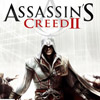
|
#18 Assassin's Creed 2 Available for: Xbox 360 - PS3 - PC |
Gameplay sum up:
Assassin's Creed II is a sequel to Assassin's Creed, and follows modern-time assassin, Desmond, as he uses a new and improved Animus 2.0 to delve into a more recent of his ancestor's memories—Ezio, citizen of 15th century Renaissance Italy, who's trained in the ways of the assassin after failing to stop his brother and father's execution—and then sets off to learn why they were killed, and more importantly, who is responsible. Like the first, you will uncover these clues by exploring the fully open cities of Venice and Florence (among others), while scaling their buildings with Ezio's many acrobatic skills, and then picking from missions (all 200 of them; roughly half is story, and the other, side missions) in a non-linear manner, in order to further his investigation and the game's narrative, as you gather intel, track your target, fight those guarding him, assassinate the intended target and then escape capture. New additions to this sequel include a full night and day cycle, with some missions only available at certain times of day; devoid minor injuries, you must be healed by doctors in the city; you can now buy weapons and supplies (including outfit's dyes) at city vendors...
A young Leonardo da Vinci will assemble weapons and even a flying machine (a glider that can be used in certain missions—along with the ability to ride carriages, gondolas and horses) for you throughout; this time you can swim, which can be used to dive in the water and hide from alert guards, along with the ability to blend in with any group of people, distract guards by throwing out money to people, hiring prostitutes to stand in the desired spots, or gather mercenaries to help you fend off said guards; if Ezio's infamy grows too high (making his presence easier for enemies to discerned), he can lower it by bribing, removing wanted posters and killing corrupt officials; and you can now disarm enemies of their weapons and use them against them. Ezio's countryside villa acts as a safe haven from the enemy—the property can even be upgraded to act as a miniature town, making Ezio regular profits—and hidden caves/catacombs can be entered, as you then proceed to navigate linear, Prince of Perisa-like obstacle courses in order to reach their end, and then collect each area's "assassin symbol" (collect six of these symbols and you will procure Altaïr's outfit).
Content sum up:
The ESRB rated this game "M" for Mature, citing "Blood," "Intense Violence," "Sexual Content," and "Strong Language." The Intense Violence refers to the fact that you will be using Ezio's Long Sword, his melee moves or his disarming moves to steal enemy weapons and then use them against them, like maces, spears and swords, as he then uses a variety of finishers to stab enemy Templars in the neck and body during sword fights, or bash them in the head with blunt weapons. In stealth, Ezio will sneak up on enemies and bash them to death with melee moves, use Throwing Knives to kill them from a distance, stab them multiple times from behind, pin them down and stab their throats with his Hidden Blade (it can be used with its double to impale two enemies in each of their throats simultaneously), simply snap their necks, or, if he wishes to lose the stealth aspect, fire at them with his Hidden one-hit Gun, as enemies then scream, groan and/or gurgle. Blood refers to the fact that it will spurt and squirt from impaled wounds with a sickening *shff* and a *squish,* and then trail from your weapons as you pull it out, and cutscenes show bloody situations; stabbings, etc...
However, like the first game, there is an option to turn off blood in the options menu, and although this won't disable the bloody sound effects, the blood will be disabled in gameplay and cutscenes. Sexual Content refers to the fact that Ezio, at one point, will undress his girlfriend, Cristina, in a brief mini-game, as you press buttons to remove said clothes; it then shows her bare back, as they lay on the bed and the scene fades there—no nudity is seen. A flashback of Altaïr shows him approach and kiss a woman, as it fades, showing him get up from a haystack with her (fully clothed) body, lying in it happily. Some scenes take place in brothels, and you can hire prostitutes, but both of these elements are not sexual in nature; a few of the villains' backstories that are told through still-frame format refer to some of the villains' more perverse activities, including adultery, sodomy, rape and prostitution; and some of the lines in cutscenes also allude to these activities, but these acts are never seen. And the Strong Language (which can't be disabled) refers to the fact that characters will use words like the sh*t and the f-word at worst, including in Italian (c*zzo and m*rda).
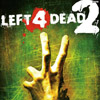
|
#19 Left 4 Dead 2 Available for: Xbox 360 - PS3 - PC |
Gameplay sum up:
Left 4 Dead 2 is a sequel to last year's game of the same name, adding a completely new five level campaign, cast and New Orleans setting, along with several new melee weapons, Infected enemy types and gameplay modes; including Scavenge, where you and three other players fight against another set of four, as one side, the Survivors, try to extend the round time by keeping their power generators charged up with gas, and the other, Infected zombies, try to stop them; or Realism, removing much of the Campaign's arcade-like handicaps, thus giving the Campaign more challenge. Like the first before it, this isn't focused on a single-player with a deep, character driven story and instead focuses on you and three fellow survivors fighting through the onslaughts of Infected zombies with a variety of weapons, as you try to stock up on supplies and reach safepoints throughout levels. And while the game's Campaign can be completed in single-player with AI controlling the remaining three survivors, the main draw is to play the Campaign in online (or split-screen) co-op.
Content sum up:
The ESRB rated this game "M" for Mature, citing "Blood and Gore," "Intense Violence" and "Language." The Intense Violence refers to the fact that you and your three fellow survivors will be tearing through droves of former civilian, cop and swat bodies, now mindless, mutated zombies infected by the virus, with weapons like a pistol, shotgun, submachine-gun, sniper rifle, frying pan, machete, and even an electric guitar, along with explosives like Molotov Cocktails (that sets them aflame) and Pipe Bombs (which causes them to gather to it in droves, and then fly with the ensuing explosion). Blood and Gore refers to the effect this arsenal produces, causing zombies to spurt blood in heavy amounts, as it then splatters on-screen, floors, walls and their clothes in heavy amounts, with open, bloodied wounds visibly marking their face and bodies. Weapons like shotguns and machetes also dismember zombies from their neck, arms and legs, as the limbs fly off, spraying heavy blood from the stumps, and in the most extreme cases, gaping holes appear in their torsos, revealing their entrails, which then spill out onto the floor, and they will often explode in bloody chunks.
Lastly, mini-boss-like enemies are even more grotesque than the rest, with tumorous masses deforming their proportions, and certain enemies will vomit gooey green acid onto players. Blood, limbs and—piled—zombie bodies linger, as do the severed halves after the above instances. Gore can be set from "High" to "Low" in options, which will remove the more extreme elements like dismemberment and entrail spilling, but the rest will remain; blood can't be fully disabled. The Language refers to the fact that all four allies will frequently spout sh*t, hell, d*mn, a**, a**hole, b*tch and God d*mn, but there are no uses of the f-word—nor an option to turn language off. And since the main focus of the game is to play in co-op online, fellow online players can and most likely will use the f-word profusely. Also worth mentioning, is that you must take pain pills and adrenaline shots to survive, characters will say things along the lines of "Oh, I could go for a cold one (beer) about now!", and there is some infrequent off-colored dialog along the lines of, "Do you know what suck head means?" and the like, but this isn't made the main focus of the game—killing zombies is.
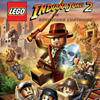
|
#20 LEGO Indiana Jones 2: The AC Available for: Xbox 360 - PS3 - PC - PSP |
Gameplay sum up:
Lego Indiana Jones 2: The Adventure Continues is a sequel to Lego Indiana Jones: The Original Adventures, adding an entirely new campaign based on the first three movies and the movie saga's newest addition, Kingdom of the Crystal Skull. Like the first—or any Lego game before it—you'll be running through levels as you fight Lego enemies, solve puzzles and most importantly, bash every object in sight in order to collect Lego Studs, the game's currency. Identical to before, you can play the campaign solo, or in two-player "drop in/drop out" co-op, but this time, instead of the camera widening to accommodate separate player movement during co-op play, its screen will now split, allowing the two players to go their separate ways, as it then merges back when you, in turn, move back together. Also new is the addition of a redesigned hub, in which it is a giant level in itself, and unlike before, you will have to discover the entrances to levels before being able to play them—lastly, LucasArts recently announced that they are working on a patch to add online co-op to the 360/PS3 version.
Content-wise: 6-
The ESRB rated this "E10" for Everyone 10+, citing Cartoon Violence. This descriptor refers to the fact that you will be fighting a variety of Lego enemies with Indy's whip, along with guns, spears, punches and random objects, like chairs, which all results in the enemies falling apart into their disassembled form and disappearing. Needless to say, with the fact that everything takes place in Lego form, the content is suitable for all ages—click here to read my review of the first for more info.
Difficulty-wise: 7+
To save myself the trouble of writing something new for little reason, here is what I said in the first game's review, "You have unlimited lives, there's virtually no penalty to dying, the base enemies are a piece of cake, and the overall gameplay mechanics are easy to master." From what I've gathered, the above rings true for this sequel as well, meaning kids 7+ won't have much difficulty in playing this game.
Fun for: Kids & Adults
With the game's clever method of reworking classic movie scenes into humorous Lego form, its easy-to-grasp gameplay, the undeniable fun of smashing everything in sight for Lego Studs, and its impressive replay value, it's fun for all ages.
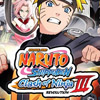
|
#21 Naruto Shippuden: CotNR III Available for: Wii |
Gameplay sum up:
Naruto Shippuden: Clash of the Ninja Revolution III is the latest in this fighting series, and the first Shippuden game to be released for Wii in the US. Other than a return of the majority of elements from past games, like a story mode that follows the "Rescue Gaara" arc, this has the largest roster of fighters yet, at a total of 40, with 40 stages; character performance has been tweaked for more balance, and their move sets have been rearranged and enhanced; while in "Two-Man Squad" mode—otherwise known in most fighters as tag-team battles—they've added an ability for a second human player to control the second tag fighter during battles; and along with the local multi-player, an online versus has been added as well. The game can be controlled with a combo of the Wiimote+Nunchuck (with a shake of the Wiimote for certain attack), but it is best played with a Gamecube or Classic Control for the quickest response.
Content-wise: 10+
The ESRB rated this game "T" for Teen, citing "Cartoon Violence" and "Mild Suggestive Themes." Cartoon Violence refers to the fact that playable characters will fight in one- on-one matches as they punch, kick and slash (some are armed with swords), as well as use throwing stars to slow each other down, which all results in firework flashes of light (there is no blood) coming from both characters' physical and fantastical, magic- like Jutsu attacks, as those hit grunt, groan and/or scream in an exaggerant manner. Additionally, a couple of characters' special Jutsu moves show a non-graphic and brief impalement of opponents, and a certain evil character stabs himself with his extended spike weapon to injure opponents voodoo-style. And Mild Suggestive Themes refers to to the fact that one of the fighter's ability is called Sexy Jutsu, a playable character's nickname is Pervy Sage, and another character, Kakashi, often carries a book called, "Make-out Tactics" and speaks of its title infrequently.
Difficulty-wise: 10+
While kids -10 could play well enough against siblings and the like in versus, and this is notably tamer than the cartoon it is based on, the controls are still complex, with lots of buttons; combos are often tough to pull off; and AI is merciless, meaning, alth-ough this is a tame, mild fighter in regards to kids 10+, kids under this age group are better off playing a fighter like Super Smash Bros Brawl.
Fun for: Kids & Adults
With the more complex fighting system and challenging AI aimed at adults, along with the fact that the cartoon also leans toward an older audience anyway, fans of Naruto and fighting games should enjoy this whether they be kids or adults.
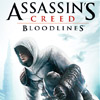
|
#22 Assassin's Creed: Bloodlines Available for: PSP |
Gameplay sum up:
Assassin's Creed: Bloodlines is a direct "spin-off" sequel to Assassin's Creed's plotline, and involves Altaïr traveling to Cyprus in attempts to eliminate the Templar remnants that retreated during the end of the last—and as he progresses, more will be revealed about Assassin's Creeds 2's protagonist Ezio and his origins. The game retains much of the gameplay style of the first, as you free-roam the city, scale its buildings and use stealth to bypass patrolling guards while you gather intel, track down your targets (in any order you wish; it's all non-linear), defeat those protecting them, and then finally assassinate them when reached. The game also includes an ability to connect with the PS3 Version of Assassin's Creed II, meaning upgrades/weapons you earn in Assassin's Creed 2 will be shared in Bloodlines, and visa-versa.
Content sum up:
The ESRB rated this game "M" for Mature, citing "Blood" and "Violence." The Violence refers to that fact that you'll be combating—and often assassinating—enemy Templars with Altaïr's Long Sword and Short Blade, as he plunges his blade into their neck, head and chest, along with his Hidden (wrist) Blade to plunge into throats and his Throwing Knives to use both in sword fights and stealth portions—in stealth, Altaïr will sneak up on the enemy and impale them with his Hidden Blade or simply snap their neck from behind. Blood refers to the effect weapons produce, and although sneaking takedowns are bloodless, when Altaïr or enemies are hit during sword fight, both spurt moderate clouds of blood—but it does not splatter or linger about. For a better idea on what you will be doing in this game, read my review of the first here.
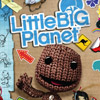
|
#23 LittleBigPlanet (PSP) Available for: PSP |
Gameplay sum up:
LittleBigPlanet is a PSP version of the PS3 game of the same name, with all the same gameplay, charm and even a fully featured level creation/sharing system found in its bigger brother. And Like the PS3 version, you'll navigate your (visually customizable) Sackboy through side-scrolling platforming levels akin to the Super Mario series (only with wackier and more imaginative imagery) as you switch between the levels' three planes (mid, foreground and background), jump gaps, pull levers, push objects, avoid obstacles, and collect Bubbles to bring up your score—upon reaching the end, you will be scored on how many times you died, how many Bubbles were collected, along with how quickly you completed the level. Unlike the PS3 version, this does not include an online/offline multi-player or co-op of any kind, but it still retains the ability to puppet your Sackboy's expressions and movements with the d-pad and back triggers, and as a major plus, this includes an all new campaign and soundtrack.
Content-wise: 6-
The ESRB rated this game "E" for Everyone, citing "Comic Mischief." This refers to the fact that Sackboy sometimes comes across obstacles like electrical objects, spike and lava pits, and if he falls in, Sackboy will look comically perturbed as he's then singed, or poked in a completely non-graphic manner, showing up at the nearest checkpoint, fully intact. Sackboy will sometimes have to jump on buttons that are mounted on top of the very infrequent enemy (as they disappear into wisps or fall off-screen), that is, if you can call "enemies" that, since they are simply robotic mechanisms with wheels and cardboard cutouts for bodies—its content is suitable for all ages.
Difficulty-wise: 7+
This game does use physics to drive the objects and platforming, meaning navigation can be touchier than your average platformer; like most in this genre, levels become harder and harder as you get further in; and the game's level creation system will go over most kids (if not many adults) heads. But, with its otherwise simplistic gameplay and controls, along with the ability to play hundreds of user created levels online with varying difficulty, most (especially more advanced, patient) kids 7+ won't have many problems completing most, if not all of the game.
Fun for: Kids & Adults
With the game's catchy soundtrack, physics based platforming, complex level creation system, extensive replay value, Sackboy customization and playable user levels, kids and adults would be just plain silly not to enjoy it on an equal level.
|
#24 James Cameron's Avatar: The Game Available for: Xbox 360 - PS3 - Wii - PC - PSP |
Gameplay sum up:
James Cameron's Avatar: The Game, takes place before the movie's events, in which Able Ryder is chosen to pilot his own Avatar (a hybrid between the humans and Na'vi, taking DNA from the pilot's body and then transferring his consciousness to it), which will allow him to infiltrate the native ten foot Na'vi, and ultimately get close enough to mine the priceless mineral the planet of Pandora contains. But you first must choose: will you use your Avatar Na'vi body to protect their home world from the human RDA corporation, or scrap it, and fight alongside the humans in order to gain the priceless minerals? In other words, it has two separate campaigns; if you choose the first, the game will play out as a third-person shooter, as you use human guns and machinery to fight the Na'vi. On the other hand, if you decide on Na'vi, you'll use more primitive clubs, spears and bow and arrows to combat invading human forces—this also has an online multi-player with modes like deathmatch and capture the flag.
However the above only goes for the Xbox 360 and PS3 version of the game, with the Wii/PSP version solely following the plight of a Na'vi warrior as he tries to counter the invading humans and take back what they've been stealing, either with a more action- oriented approach as he uses his staff to combat them, or a more stealthy one, as he evades patrolling enemies in the Pandora jungle's plentiful foliage and takes them out with sneak attacks. The Wii version uses motion controls, with a swing of the Wiimote in any direction to perform a variety of attacks with your staff, and if you use certain well-timed swings, you'll perform more powerful combos. You'll also travel the jungle with light platforming elements, as you climb ledges and the like, and the Wii version uses a tilt of the Nunchuck to control your flying steed in portions that resemble that of Panzer Dragoon as you fire at incoming enemies with the Wiimote's cursor—the Wii version also features a 2 player drop-in/drop-out co-op multi-player.
Content sum up:
The ESRB rated the Xbox 360 and PS3 version "T" for Teen, citing "Animated Blood," "Mild Language," "Mild Suggestive Themes" and "Violence." The Violence refers to the fact that as a human RDA solider you will be fighting the Na'vi with with weapons like machine-guns, platform-mounted turrets, flamethrowers and even airstrikes. And as a Na'vi warrior, you will be combating the human RDA soldier with weapons like staffs, axes and bow and arrows. The Blood refers to the fact that when hit by Na'vi, human soldiers will dissipate into clouds of blue mist with flashes of light, and when humans shoot Na'vi, they'll produce a same but slightly more apparent effect. Mild Suggestive Themes refer to some human dialog with light hints of sexuality, like a brief mention of a hooker, etc. And Mild Language refers to the fact that human characters will use words like hell, d*mn, b*tch and bastard in dialog throughout.
The ESRB also rated the Wii and PSP version "T" for Teen, but citing separately "Mild Language," "Mild Suggestive Themes" and "Violence." Violence refers to the fact that you will be bashing at human soldiers as a Na'vi with your staff and/or shooting them with your bow and arrows, along with the ability to lift them by their throats and fling them to the ground or use your (most often slow-motion) stealth attack to take them down a variety of ways, which all results in flashes of light (explosions when helicopt- ers are destroyed) on impact—combat is bloodless. Mild Suggestive Themes refers to the fact that the inhuman, cat-like Na'vi females wear bikini-like outfits that afford a very partial view of their behind. And Mild Language refers to the human characters using words such as d*mn and hell in combat throughout.
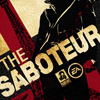
|
#25 The Saboteur Available for: Xbox 360 - PS3 - PC |
Gameplay sum up:
The Saboteur is an open-world third-person shooter set in Nazi-occupied 1940s Paris, and revolves around protagonist, Sean Devlin, an Irish racer, who keeps his distance from the Nazi's as long as they do the same for him. However, as his friends begin to be killed one by one, and by the Nazis, Sean cannot ignore their presence any longer, as his indifference turns to rage. To succeed in his revenge quest, he will be assisted by the French Resistance and British Intelligence forces as he navigates the open city of Paris by scaling its buildings and/or driving vehicles, while he clears city sectors of Nazi presence, thus changing each from a dreary black & white, to full, vibrant color, awarding him with "Perks" for various skills and bringing up the "Will to Fight" factor, which effects civilians' morale in each sector; the higher it is, the more nearby allies will be inclined to help as you fight. To progress the story, Sean will have to fight his way through the Nazi patrols to reach each of the Nazi higher-ups responsible for his friends' deaths, and he can also participate in side-missions to gain new weapons and bring up the "Will to Fight" meter in completed areas.
Content sum up:
The ESRB rated this game "M" for Mature, citing "Blood," "Intense Violence," "Nudity," "Sexual Themes," and "Strong Language." The Intense Violence refers to the fact that you will be using your hand-to-hand combat skills, weapons like machine-gun, rocket launchers, timed explosives, and even flamethrowers to kill enemy Nazis, as well as use stealth attacks to stab them or break their necks from behind, and you can hijack their cars by shooting them on the spot. You can perform all of the above on civilians roaming the street at any time you wish, as they then cry out and scream, but there's penalties to this act, meaning unlike similar games (aka the Grand Theft Auto series), killing civilians is well discouraged. Blood refers to the effects your weapons produce, as enemy Nazis and civilians spurt blood in moderate amounts, which then splatters on the surrounding area and often pools on the floor.
Sexual Themes refers to the several brothels you can visit; German soldiers are seen groping and fondling these brothel/cabaret's inhabitants; some dialog contains sexual innuendo in a not too subtle manner; and prostitutes can be seen walking the streets, but the game contains no actual scenes of sex. Nudity refers to the female dancers at a cabaret that are topless but for tiny pasties and wear thongs revealing the majority of their behinds. Each new copy of this game includes the code to unlock the Midnight Show dowloadable content that allows access to a VIP room at "Belle de Nuit," giving you a front seat to watch four unique Burlesque dancers perform topless in a private show; and with this code, you can toggle nudity in the game, removing all of the girls pasties, thus making them fully topless—if you rent or buy this game used, you must buy the content online. And the Strong Language refers to the fact that characters will frequently use words like sh*t, a**hole, c*ck and the f-word.
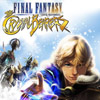
|
#26 Final Fantasy CC: The Crystal Bearers Available for: Wii |
Gameplay sum up:
Final Fantasy Crystal Chronicles: The Crystal Bearers (...takes breath...) is set in the Crystal Chronicle universe, taking place a thousand years after the events of the first Gamecube installment. After destroying the magic-oriented Yuke clans' Crystal during the Great War, supposedly sealing the Yuke clans' fate, the winning Lilty clan brought a new era of science to remaining clans, Clavats and Selkies, banning magic entirely. In a magicless world, an anomaly has shown itself in the form of a "Crystal Bearer," a person who is imbued with magic, and thus an outcast. You are one of these Bearers, and when you are hired to protect a Lilty airship, monsters attack; their masters, the Yukes. This game takes a departure from the first, with a fully movable camera and open-world, and gameplay that involves using the playable Layle's telekinetic powers to lift objects and throw them into enemies, or lift enemies themselves. He'll also use his powers to navigate dugeons by activating switches remotely or his energy grapple hook to grab ledges. There are also several QTE mini-games; you can ride on trains; swim; and even control a Chocobo for faster travel.
Content sum up:
The ESRB rated this "T" for Teen, citing "Alcohol Reference," "Crude Humor," "Fantasy Violence," "Mild Language," and "Suggestive Themes." The Fantasy Violence refers to the fact that you'll be using Layle's telekinesis to lift and throw a variety of objects at a plethora of enemy creatures, or lift the enemy themselves, and then toss them into anything or at anything (like trains, etc.; he can also lift civilians and use his powers on them in a comical manner, but they won't like it) to do away with them, as well as use guns, swords and a machine gun in certain portions. However, all the above only results in fantastical firework-like effects and flashes of light.
Suggestive Themes refers to a couple of the main female characters wearing outfits, or in a few beach areas, bikinis that reveal moderate cleavage, there is some mildly suggestive dialog, and one mini-game consists of two bikini-clad girls trying to knock each other off platforms over the water with their hips. Alcohol Reference consists of the fact that some collectable items have alcoholic names like Rainbow Wine, and you can explore a winery, and then use your powers to open barrels of said substance, as it pours out onto the floor—but there is no use. The Crude Humor refers to the ability to lift manure and throw it at enemies. And Mild Language consists of main characters using words like d*mn and hell infrequently throughout.





